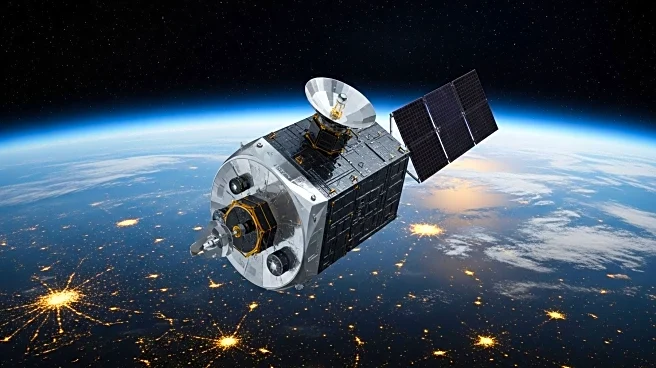What's Happening?
A recent study published in Science Advances explores the Laschamps Excursion, a geomagnetic disruption that occurred 41,000 years ago, affecting Earth's magnetic field and human behavior. During this event, Earth's magnetic poles shifted erratically, weakening the magnetosphere and exposing the planet to increased solar radiation. This led to auroras appearing closer to the equator and heightened ultraviolet exposure. Researchers suggest that humans adapted by seeking shelter, using tailored clothing, and applying mineral pigments as sunscreen. The study highlights the collaboration between archaeologists and geophysicists to understand the impact of space weather on ancient human populations.
Why It's Important?
Understanding the effects of geomagnetic disruptions on human behavior provides valuable insights into how ancient populations adapted to environmental changes. The study emphasizes the importance of interdisciplinary collaboration in uncovering the complex interactions between space weather and human adaptation. By examining past events like the Laschamps Excursion, researchers can better predict and prepare for future geomagnetic disruptions, potentially informing strategies for mitigating their impact on modern society. This research also contributes to the broader understanding of human resilience and innovation in response to environmental challenges.
Beyond the Headlines
The study challenges the notion that space weather alone drove changes in human behavior, suggesting it was one of several factors influencing adaptation. It also highlights the potential for future geomagnetic disruptions to affect modern technology and infrastructure, underscoring the need for continued research and preparedness. The collaboration between archaeologists and geophysicists demonstrates the value of integrating diverse perspectives to address complex scientific questions, paving the way for future interdisciplinary studies.












